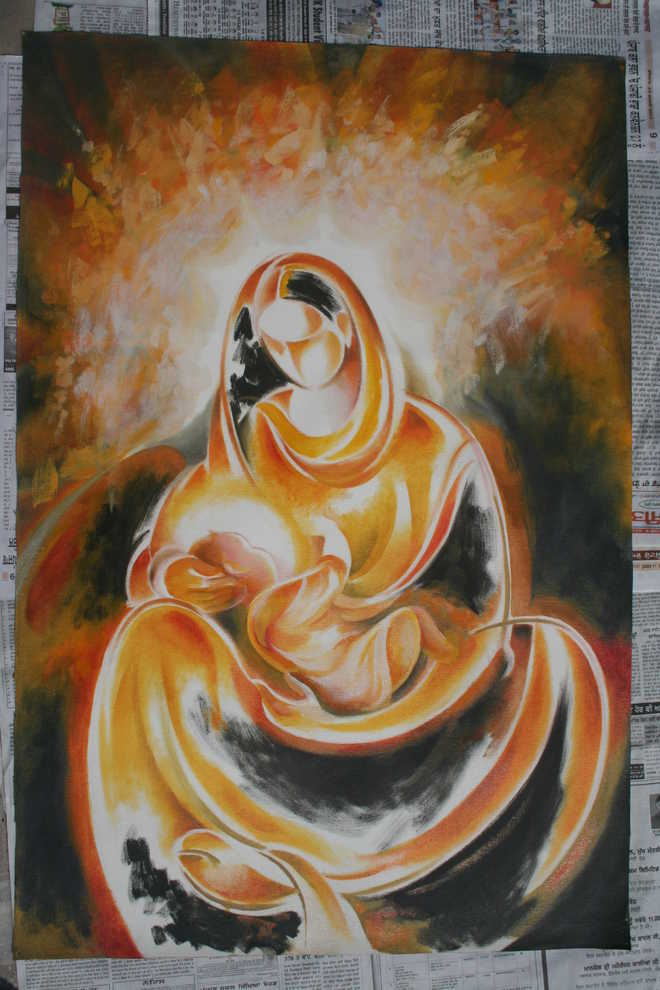The Guru of light
Kuldip Singh Dhir
Birth of Guru Nanak marks an enlightening era in the darkest period of medieval India. Nugatory rituals, superstitions, dogmas, fatalistic outlook, caste divisions, gender discrimination and diffidence to stand up against injustice, oppression or tyranny had rendered people hapless invertebrates. He took upon himself the task of redemption from all this as an assignment from the heavens. The motive force for this lifelong mission was his intimate communion with the Ultimate which forms the leitmotif of this biography. This mystic connection becomes apparent for the first time when Nanak disappeared at the Bien river to reappear after three days.
His message was of oneness of the transcendent. He argued politely but compellingly against futile customs and orthodoxy, liberating people from senseless beliefs, hatred, malice, cowardice, immorality, and delusions which had created a plethora of problems. Profoundness of his simple and persuasive teachings had an immediate impact. Extra-ordinary story of the Guru has been told time and again, but it does not take long to appreciate that this narrative is privileged to stand apart. It relates to the reader as much through the emotive word as through scintillating brush-strokes. Its storyline leans on factual details available in the Sikh scripture Vars of Bhai Gurdas, Janamsakhi traditions, Mahima Parkash and Twarikh Guru Khalsa. Sumeet has vetted these with the help of Bhai Vir Singh, Macauliffe, Dr Ganda Singh, Prof Harbans Singh, Dr Gopal Singh, Prof GS Talib, Dr JS Garewal and McLeod.
The author has profusely used the hymns of the Guru to communicate his message faithfully. His verses carry the reader into a realm of bliss, assuaging anxiety. Over 150 artworks, both realistic and abstract, adorn the leaves of this work. These are based on author’s own paintings and those of renowned artist Devender Singh, who happens to be his father.
These visuals speak in terms of multilayered creativity and boundless imagination, transcending determinate Cartesian barriers of everyday language. Flesh-and-blood characters, hermeneutical implications, mystical aura and creativity coalesce in this text. Abstract depiction of birth of the Guru, his refusal to wear the sacred thread, the Bien episode, discussion with Pir Dastgir and Sidhas, description of the Divine court (Sodar), the celestial song (arti), moods evoked by various Ragas / months of the year, and socio-cultural reality portrayed in the hymns are a testimony to it.
Starting with the birth of the Guru, Sumeet ends the introductory chapter with Nanak preparing for his missionary journeys after the Bein episode. We have a glimpse of his birth place Nankana Sahib, the birth of the extraordinary child, his family, and his father’s efforts to mould Nanak in the social, religious, cultural and educational framework of his times failing badly. The child prodigy astonishes everybody with rational thinking impeachable knowledge and precocious queries. The four chapters that follow present Nanak disseminating his message of oneness of God, dignity of labour, universal love, peaceful coexistence and socially responsible life, couching it in hymns of postmodernist plural tone.
Nanak acknowledges that his message was derived from a divine vision saying: “As the word comes, so do I describe it.” The people and places, customs and beliefs, habits and habitats, flora and fauna, natural environs and landscape, mountains, rivers and desolate lands, ascetic’s yogis and preachers of diverse faiths all come alive as if with a magical touch. He sang the divine praises all along. He often directed his Muslim companion Mardana to play on his rabab as he vividly sang the bani or Divine Word descending upon him from the skies.
Guru’s settled life in Kartarpur, his handing over his mission to Bhai Lehna, anointing him as Guru Angad and an insightful summary of Nanak’s teachings have been taken up next. The last three chapters give us a peep into the mind and message of the Guru by taking up three of his masterpieces, Japji, Asa di Var and Bara-mah. This unique biography combines skillfully narrative with the descriptive, real with the imaginary, and word with the brush-strokes to capture the persona of Guru Nanak.









